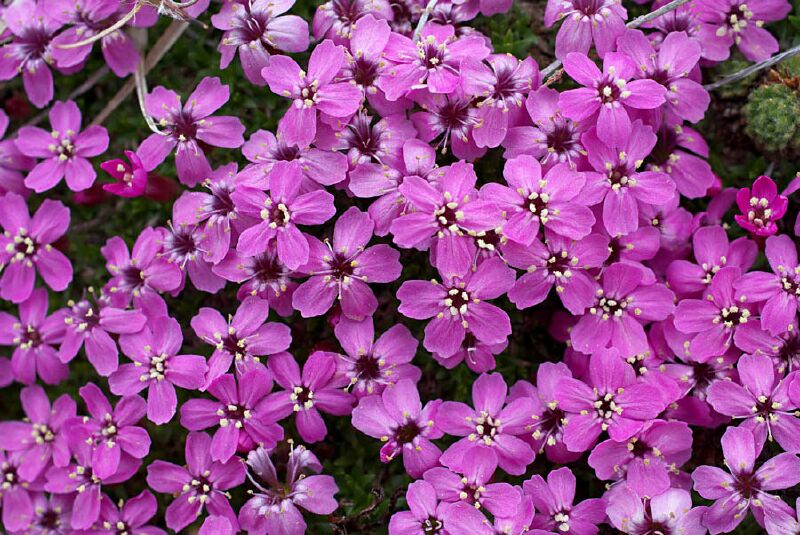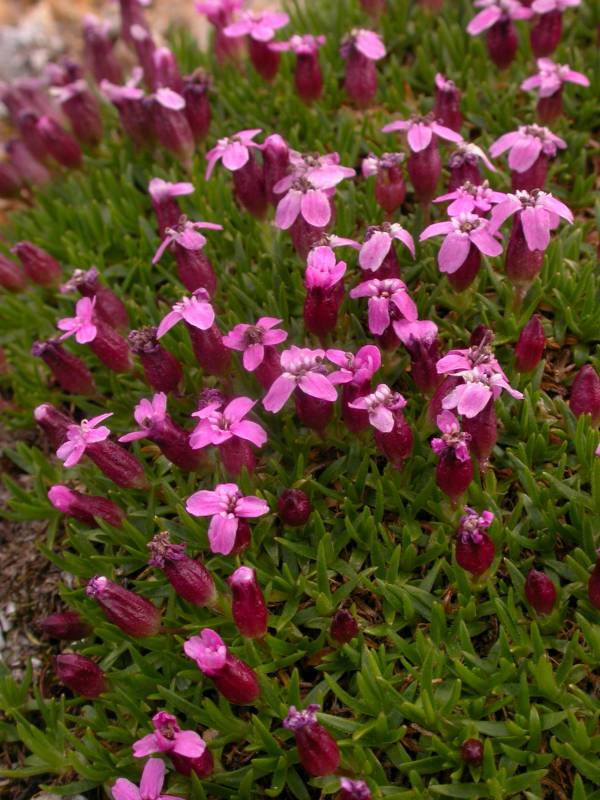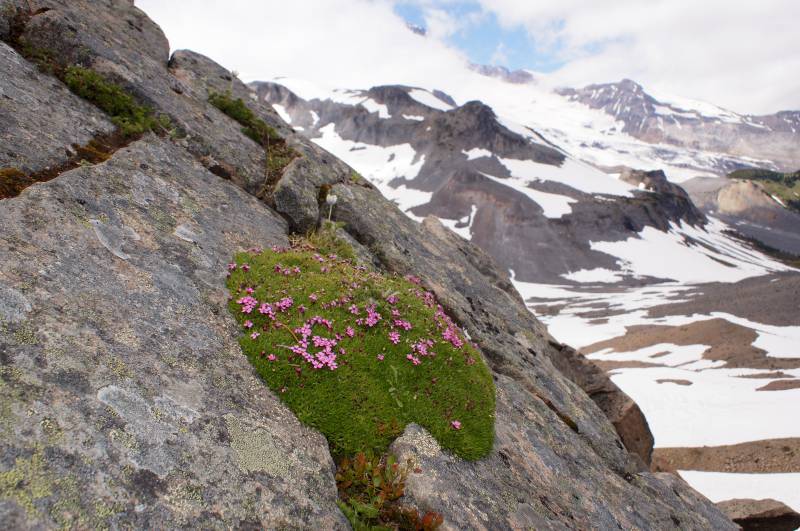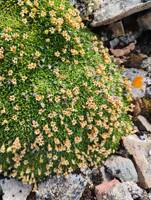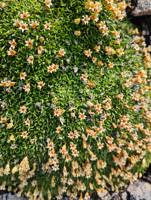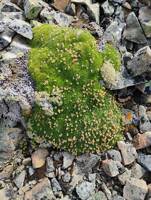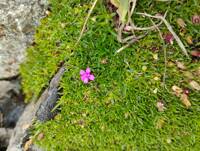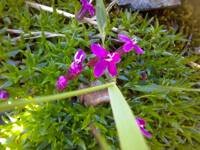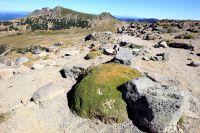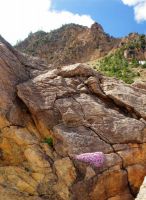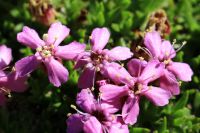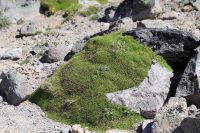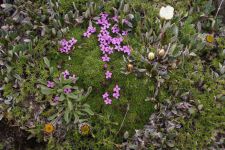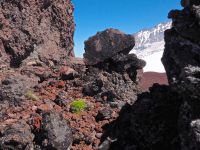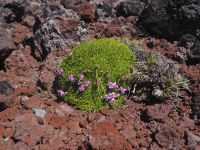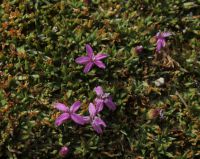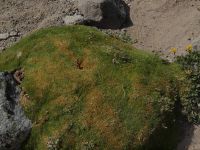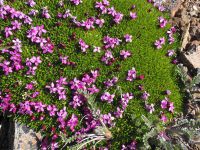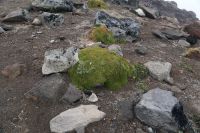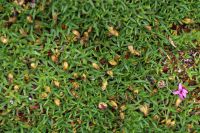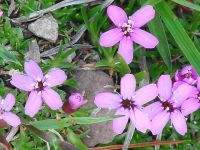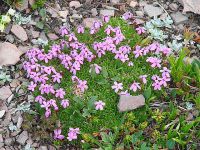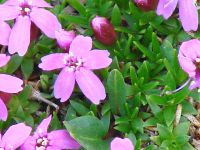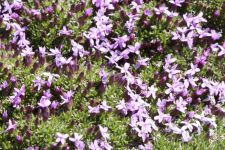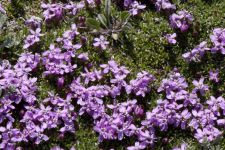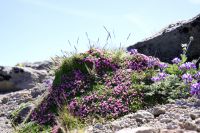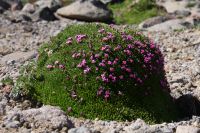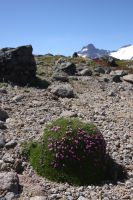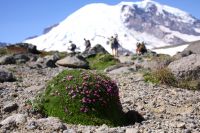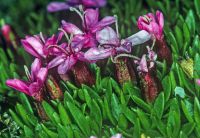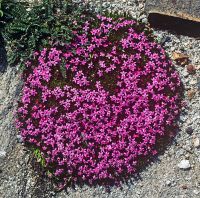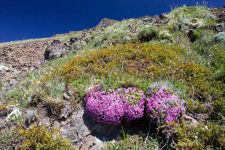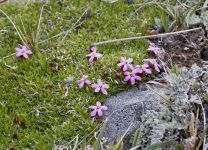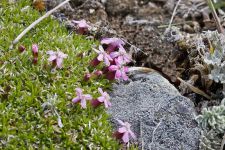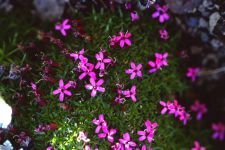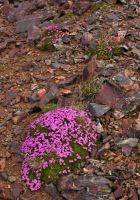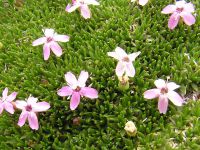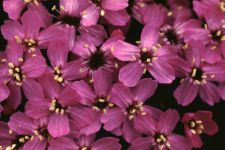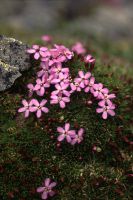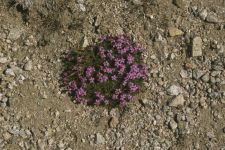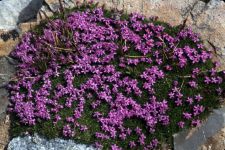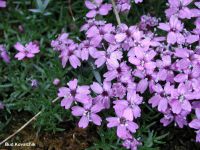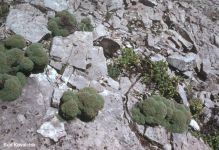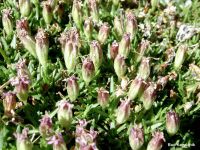Distribution: Occurring in the Cascades and Olympic Mountains in Washington; Alaska to Oregon, east to the Rocky Mountains, and east across Canada to northeastern North America; circumboreal.
Habitat: Rock crevices and talus slopes at high elevations in the mountains
Flowers: June-August
Origin: Native
Growth Duration: Perennial
Conservation Status: Not of concern
Pollination: Self-pollination, moths, hummingbirds
Cushion-like perennial from a woody root and branched crown, forming dense mats up to 3 dm. broad; flowering stems 3-6 cm. tall.
Leaves mostly basal, staying attached for many years, linear to linear-lanceolate, sessile, 4-10 mm. long, glabrous or scabrous.
Flowers single, from nearly sessile or with peduncles up to 4 cm. long, usually dioecious; calyx tubular, 5-lobed, 3-10 mm. long, pinkish; petals 5, pink to lavender, 8-12 mm. long, the claw about twice as long as the blade; blade appendages 2, very small or lacking; stamens 10; styles 3.
Capsule 3-celled, opening by 6 teeth.
Publication: Enum. Stirp. Vindob. 78, 242. 1762.
Silene acaulis (L.) Jacq. ssp. exscapa (All.) DC.
Silene acaulis (L.) Jacq. var. exscapa (All.) DC. [HC]
Silene acaulis (L.) Jacq. var. subacaulescens (F.N. Williams) Fernald & H. St. John [HC]
Silene exscapa All.
Xamilensis acaulis (L.) Tzvelev
PNW Herbaria: Specimen records of Silene acaulis in the Consortium of Pacific Northwest Herbaria database
WA Flora Checklist: Silene acaulis checklist entry
OregonFlora: Silene acaulis information
E-Flora BC: Silene acaulis atlas page
CalPhotos: Silene acaulis photos

